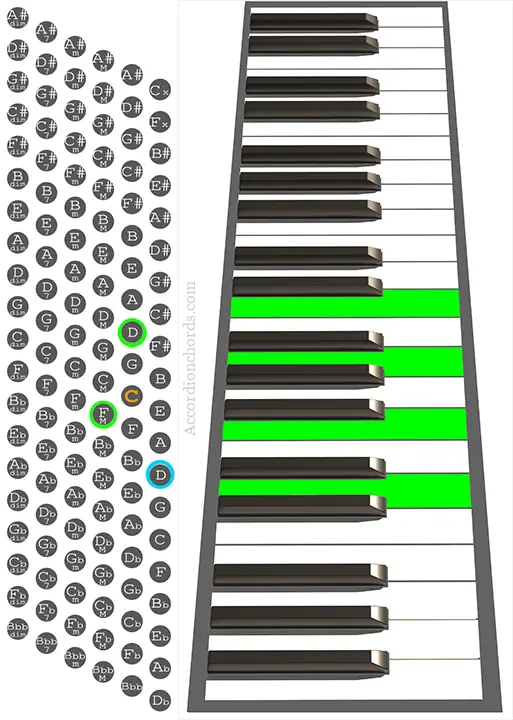Rich325
Newbie
Newbie seeing bass chords. Mostly no probs. But what to play for Dm7? Do I play Dm or D7? There are other awkward bass chords which I guess would be ok on piano. Thanks 
What does he say for Dm7

Yes.Is D-7 another way of writing this, I have a lot of music with this notation ?
And you had another option is to simply play the F major triad over the D bass. It’s often cleaner to not double the bass.Another option is to just play a Dm, especially if the extra note the would turn it into a minor seven chord (a C in this case) appears in the melody or other part of the right hand arrangement.
A chord written on the very top of the staff is (usually) indicating the overall harmony of the song at that point. That harmony can be realized in all sorts of ways: All in the left hand, all in the right hand, or as a combination of both hands. Just because the left hand of an accordion can play chords, that doesn't meant that all chords should only be played using the left hand.
Thankyou, keep it simple.Another option is to just play a Dm, especially if the extra note the would turn it into a minor seven chord (a C in this case) appears in the melody or other part of the right hand arrangement.
A chord written on the very top of the staff is (usually) indicating the overall harmony of the song at that point. That harmony can be realized in all sorts of ways: All in the left hand, all in the right hand, or as a combination of both hands. Just because the left hand of an accordion can play chords, that doesn't meant that all chords should only be played using the left hand.
ThanksYes.
I learned from David Lange to play Dm7 as D bass + Dm + Am. Of course that also adds the 9 (not just the 7). If you are okay with rich chords and if it suits the style (e.g., jazz, bossa nova, etc) then that's a great option.
This is, of course, a minor 9 chord - very common and useful. Try it at the end of a song.I learned from David Lange to play Dm7 as D bass + Dm + Am. Of course that also adds the 9 (not just the 7). If you are okay with rich chords and if it suits the style (e.g., jazz, bossa nova, etc) then that's a great option.
Newbie seeing bass chords. Mostly no probs. But what to play for Dm7? Do I play Dm or D7? There are other awkward bass chords which I guess would be ok on piano. Thanks
